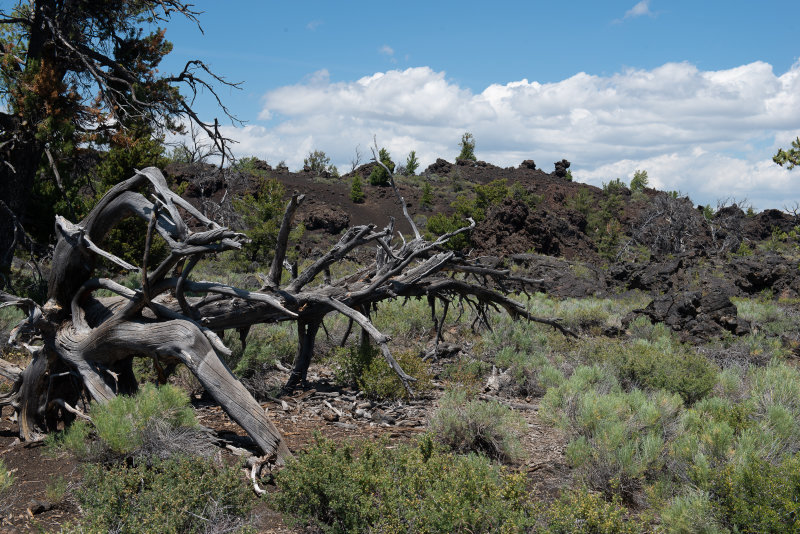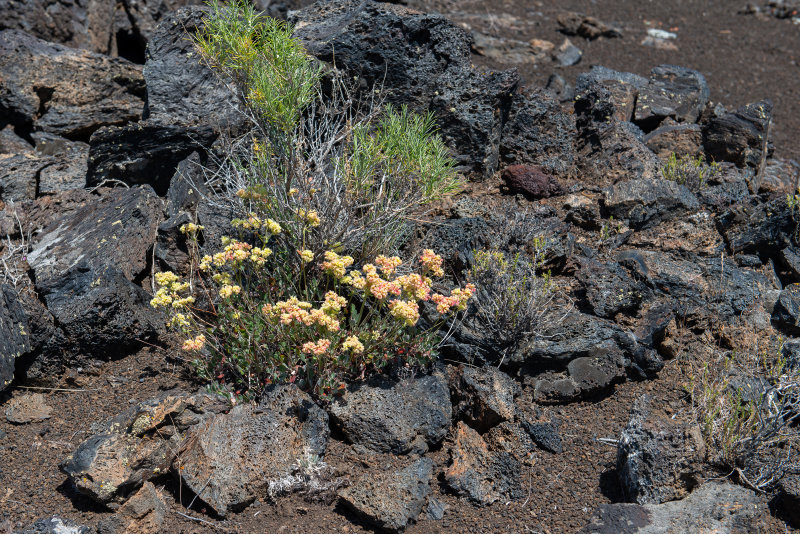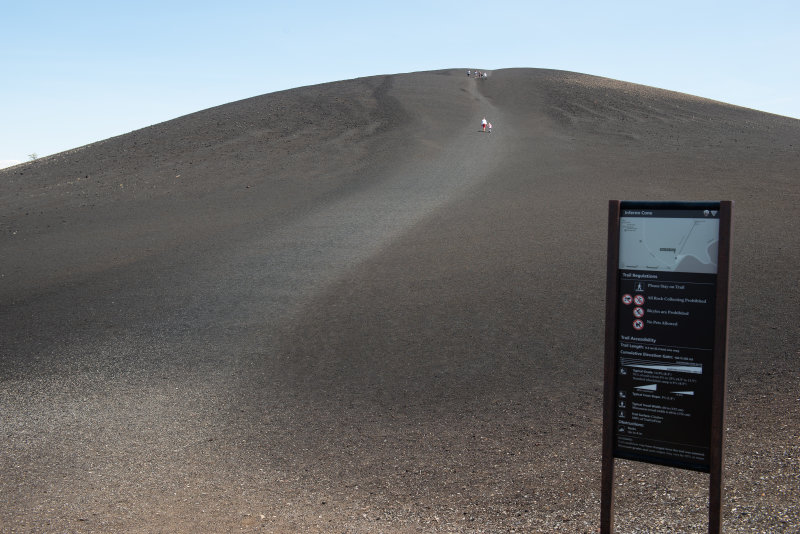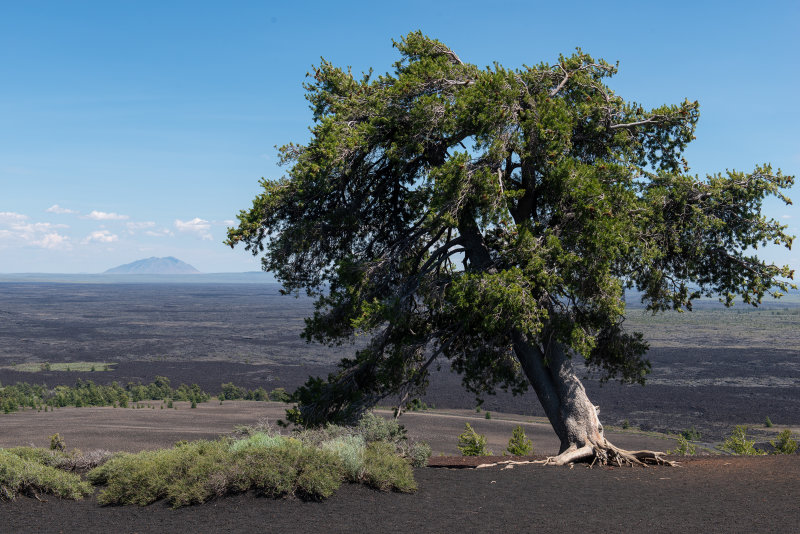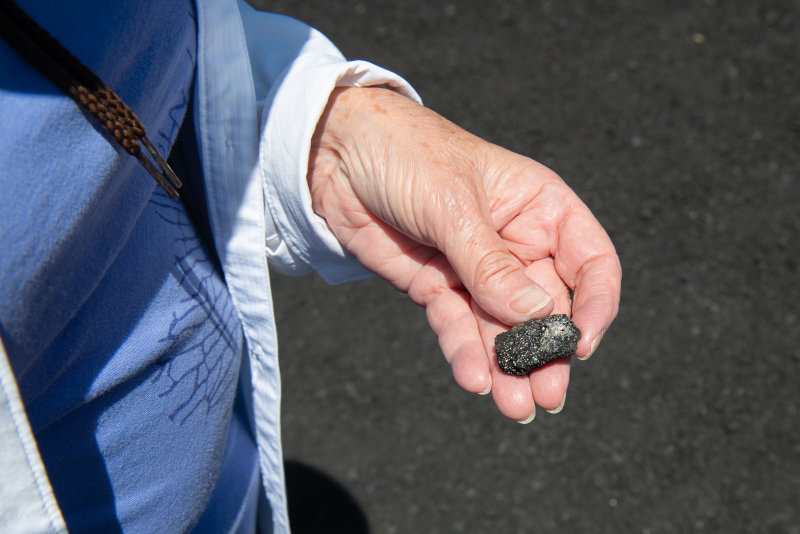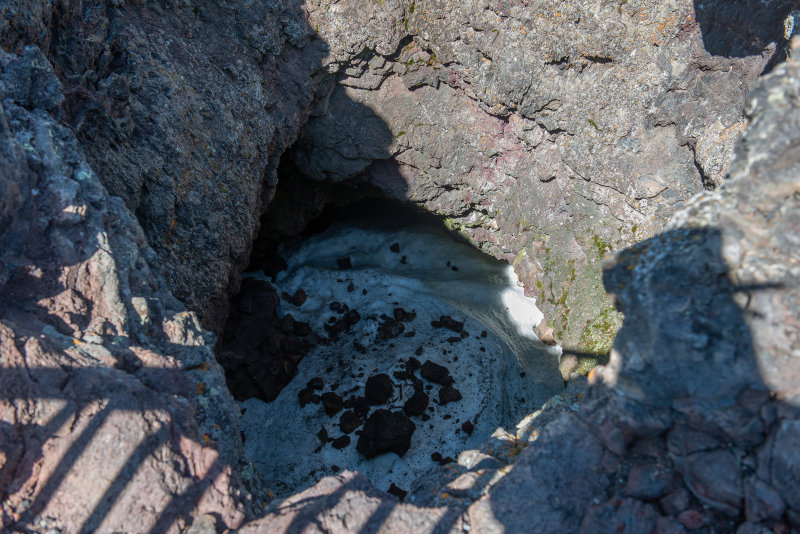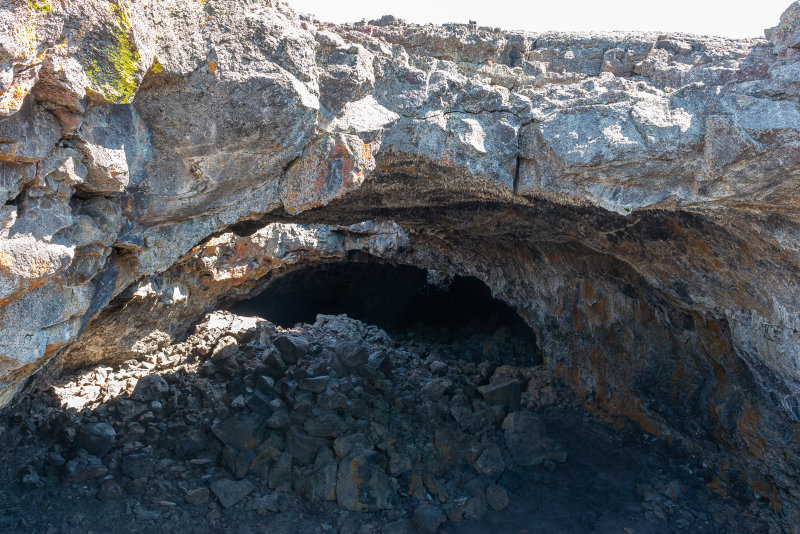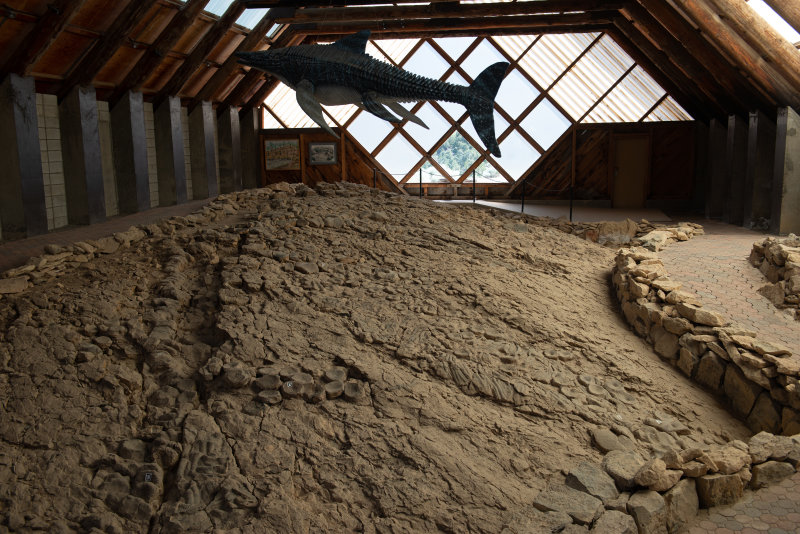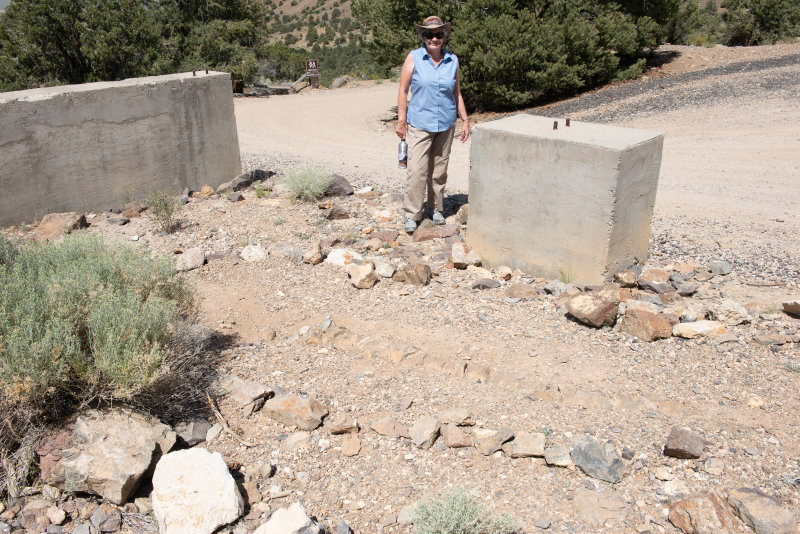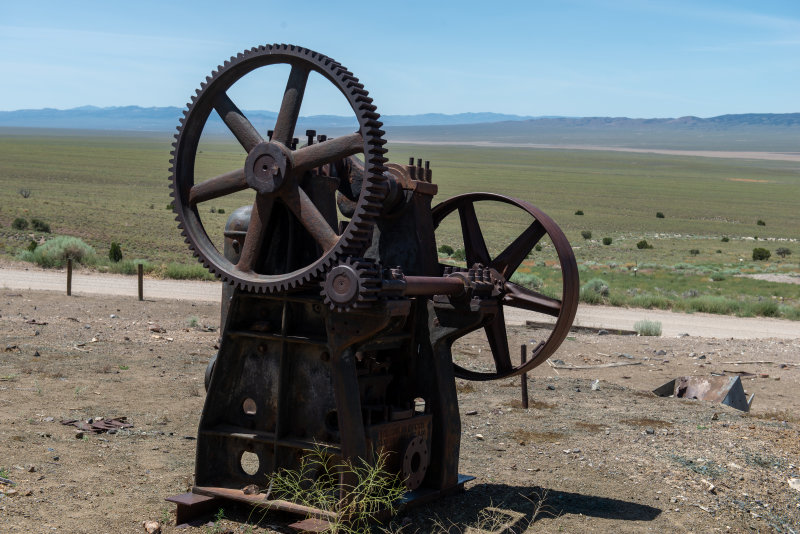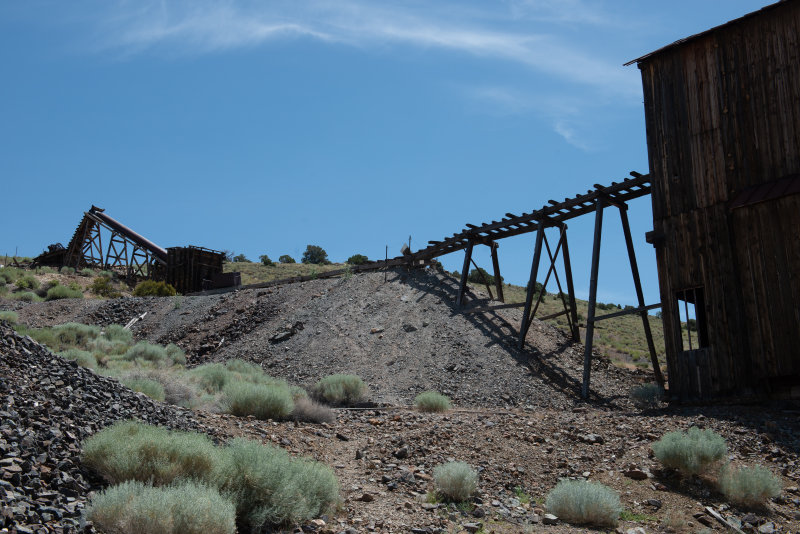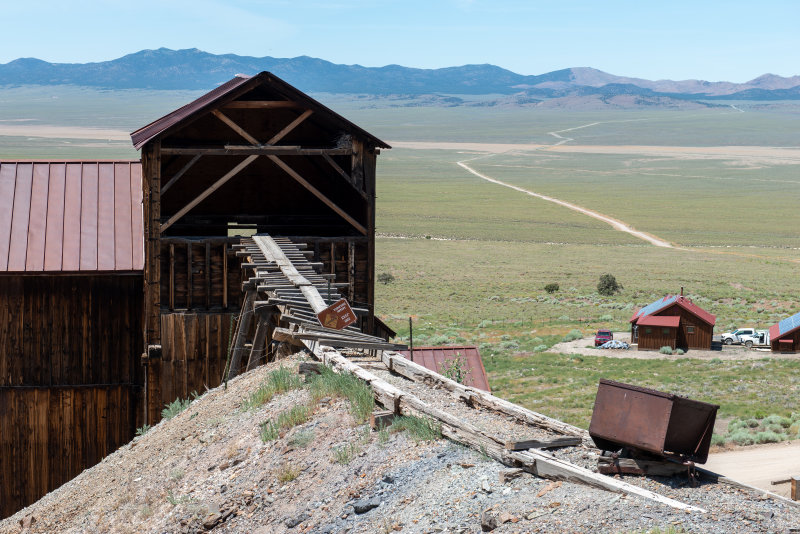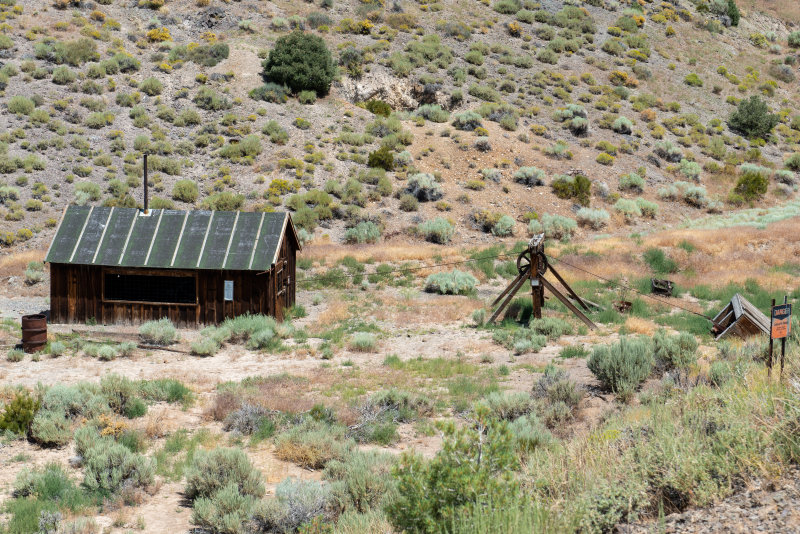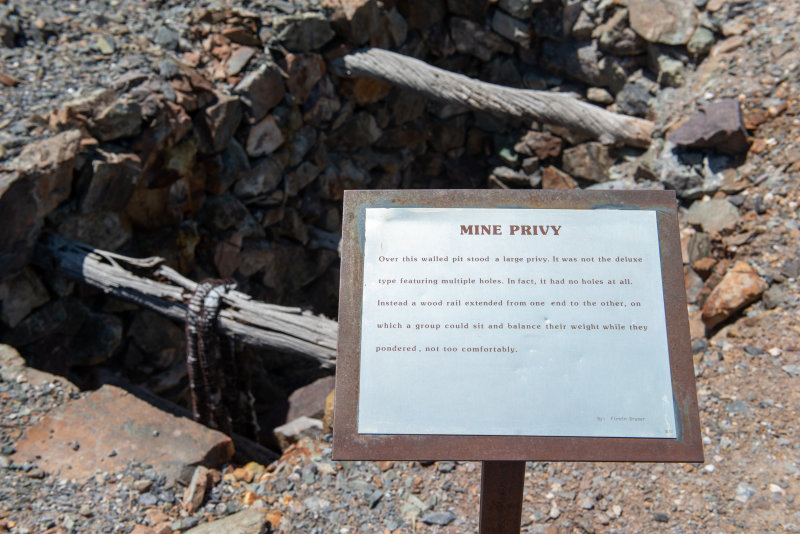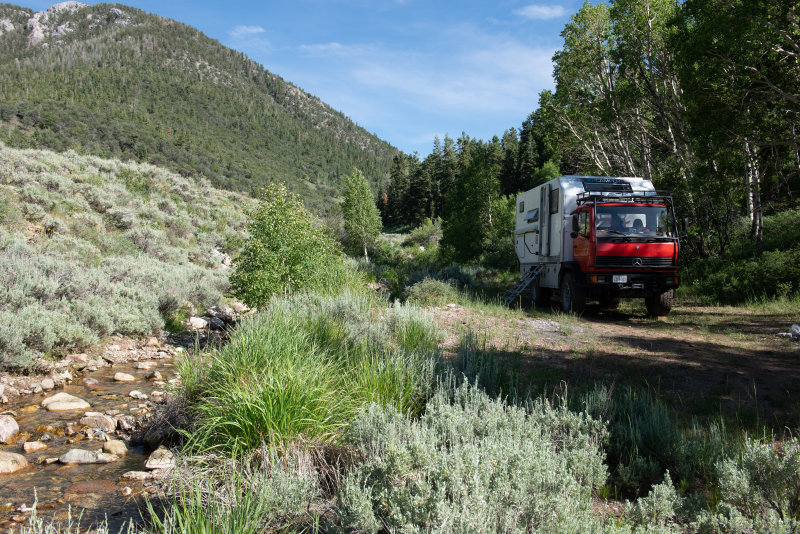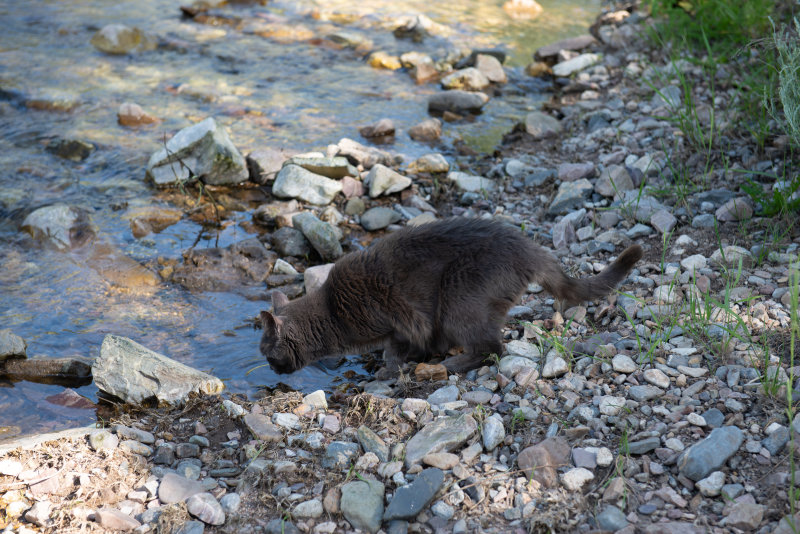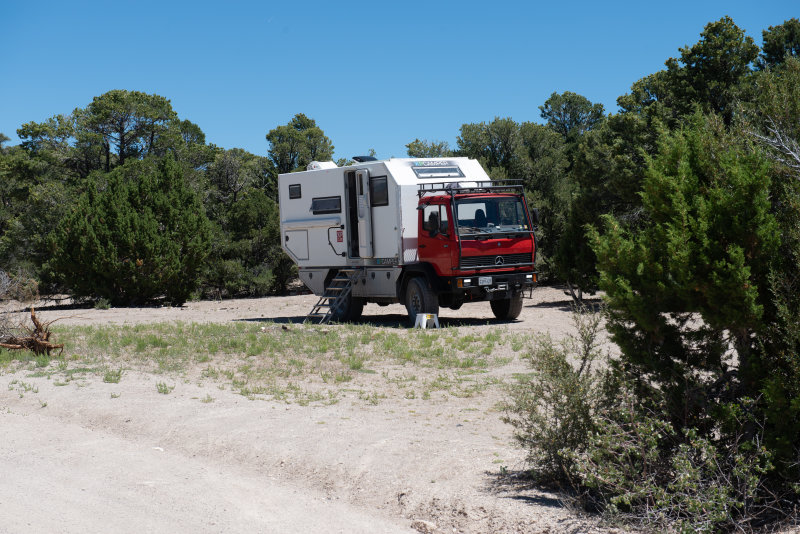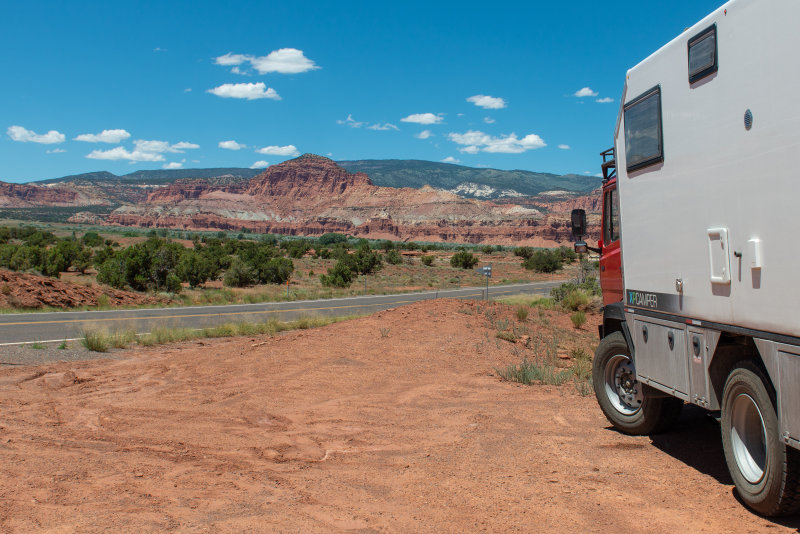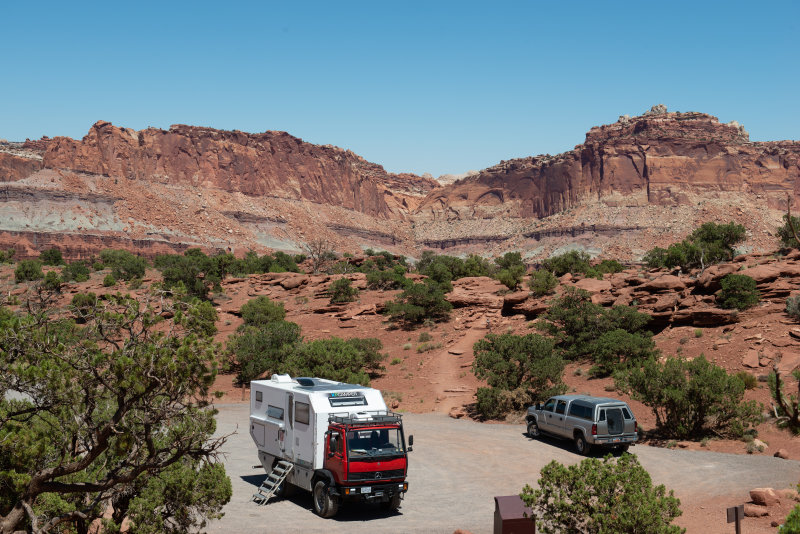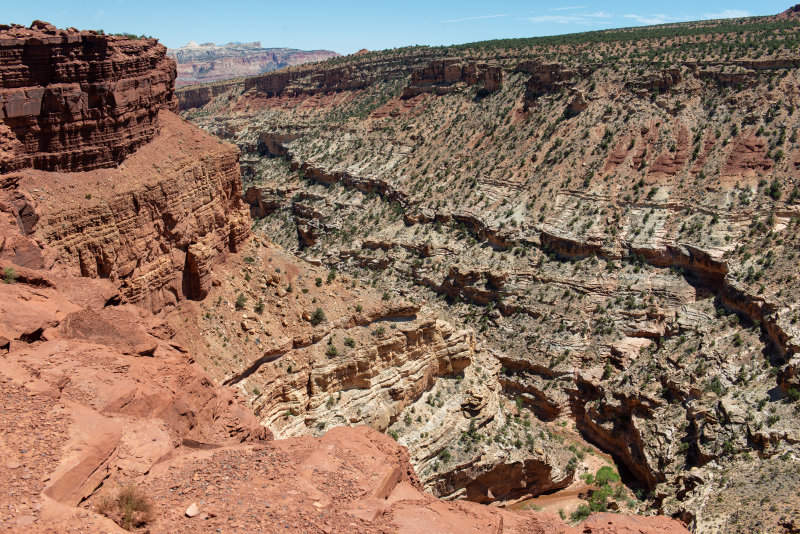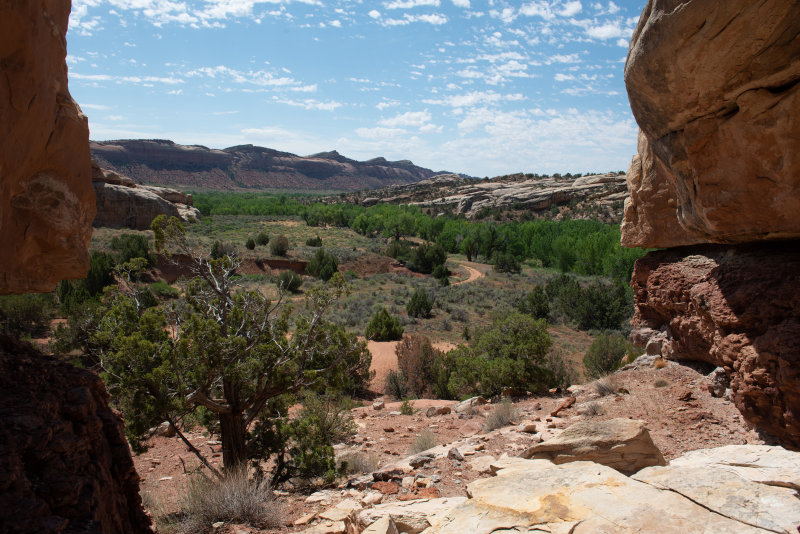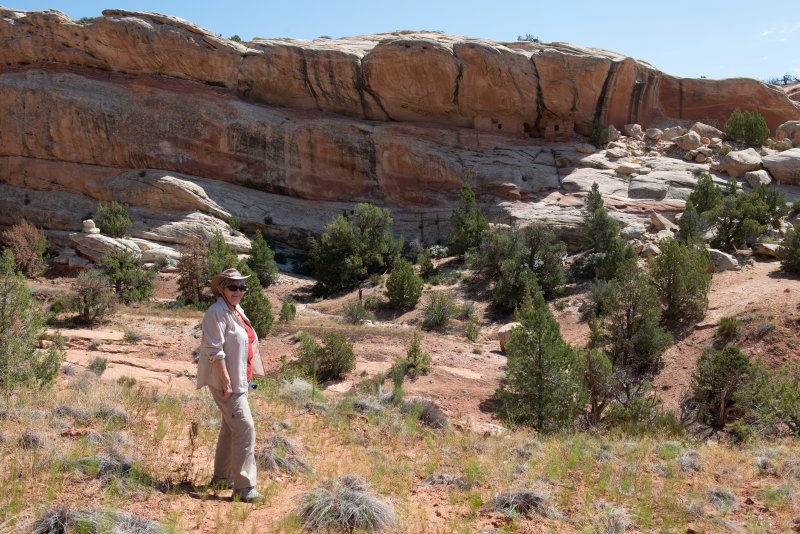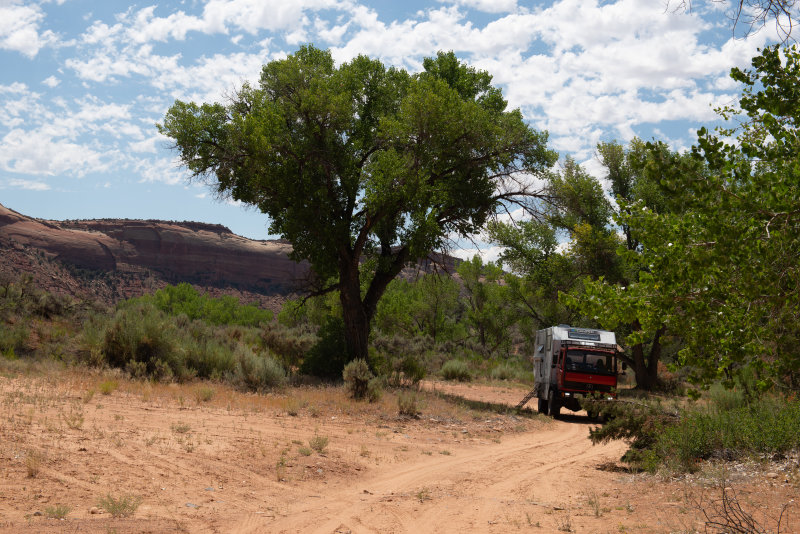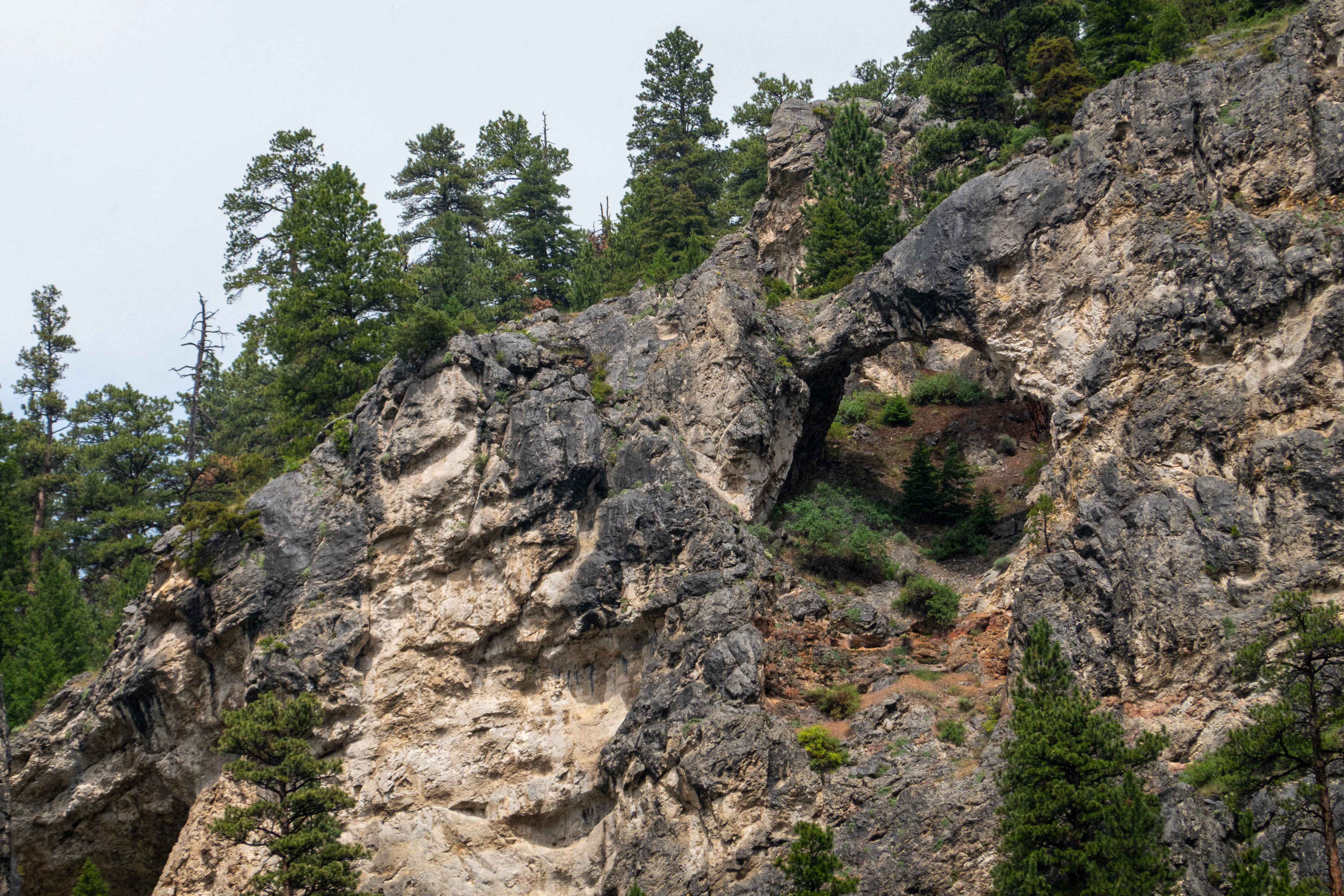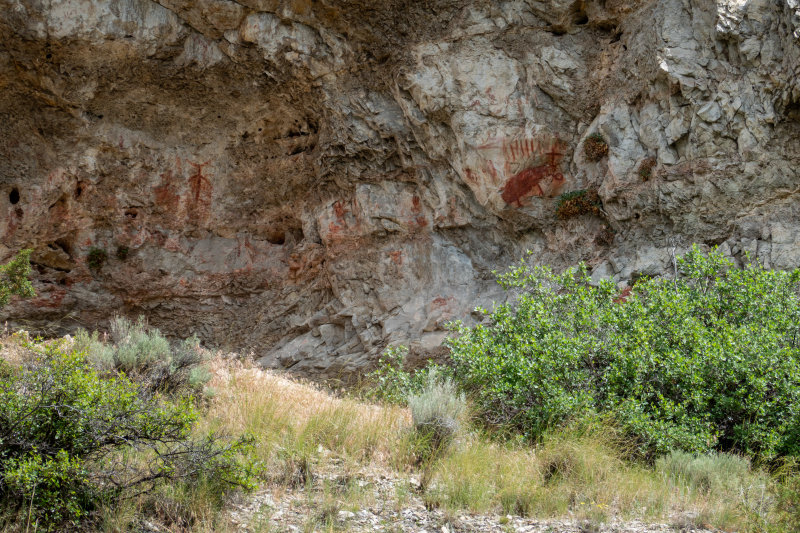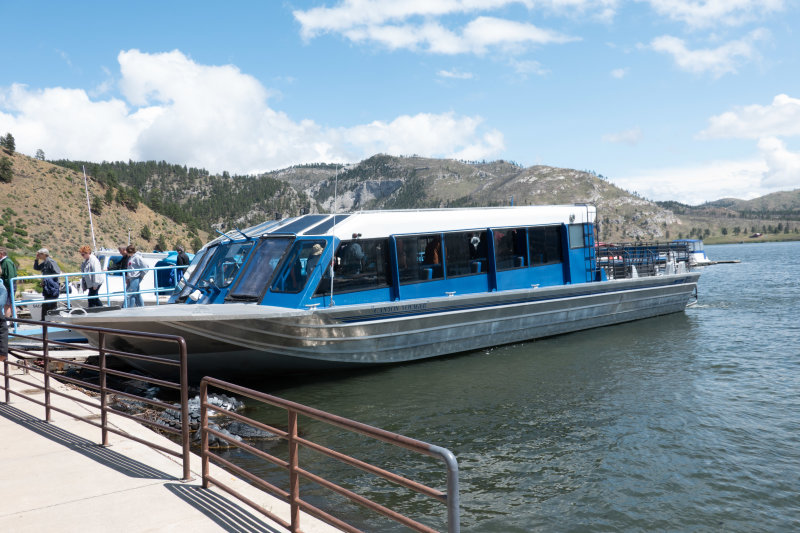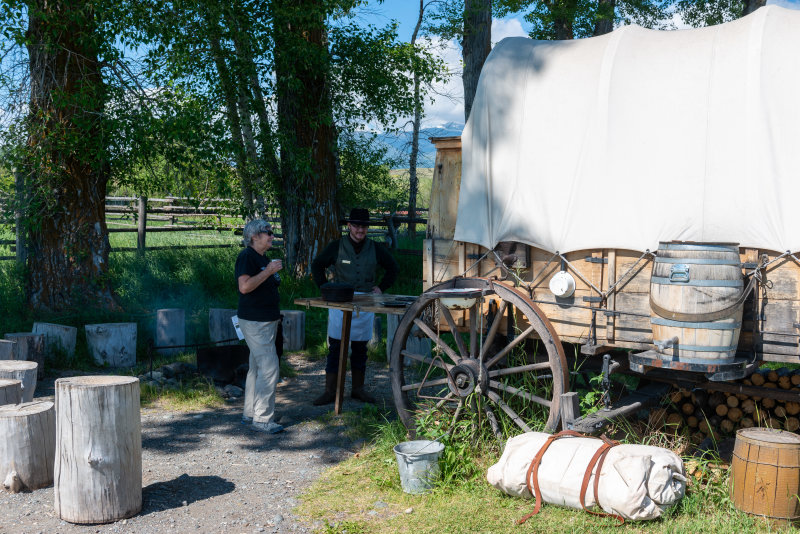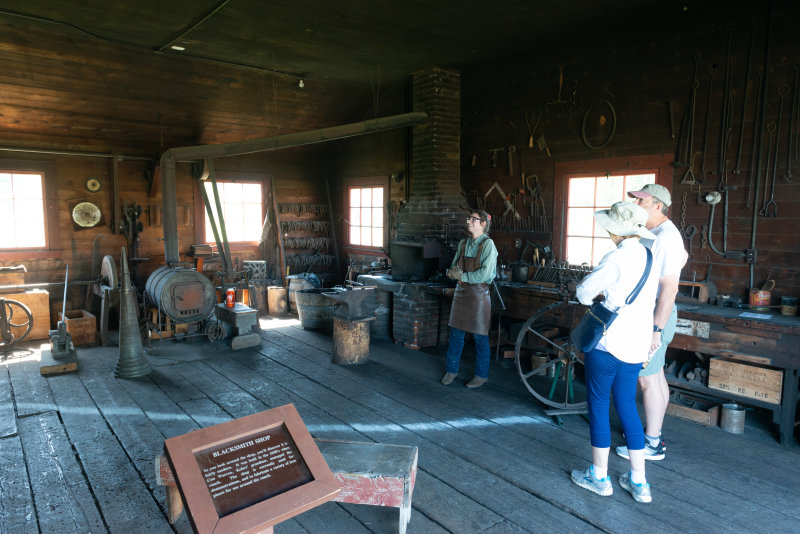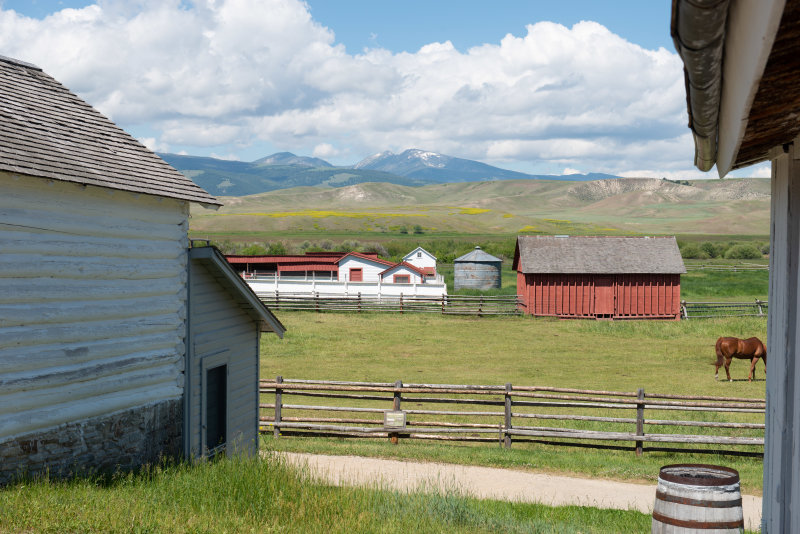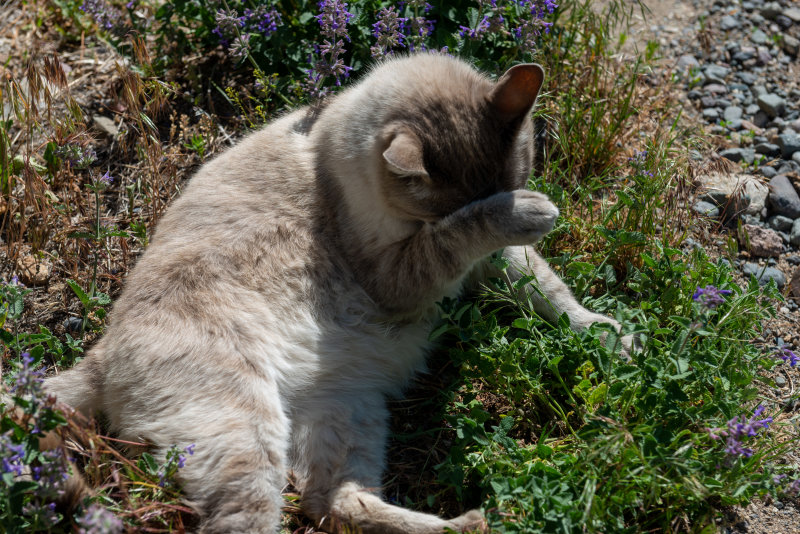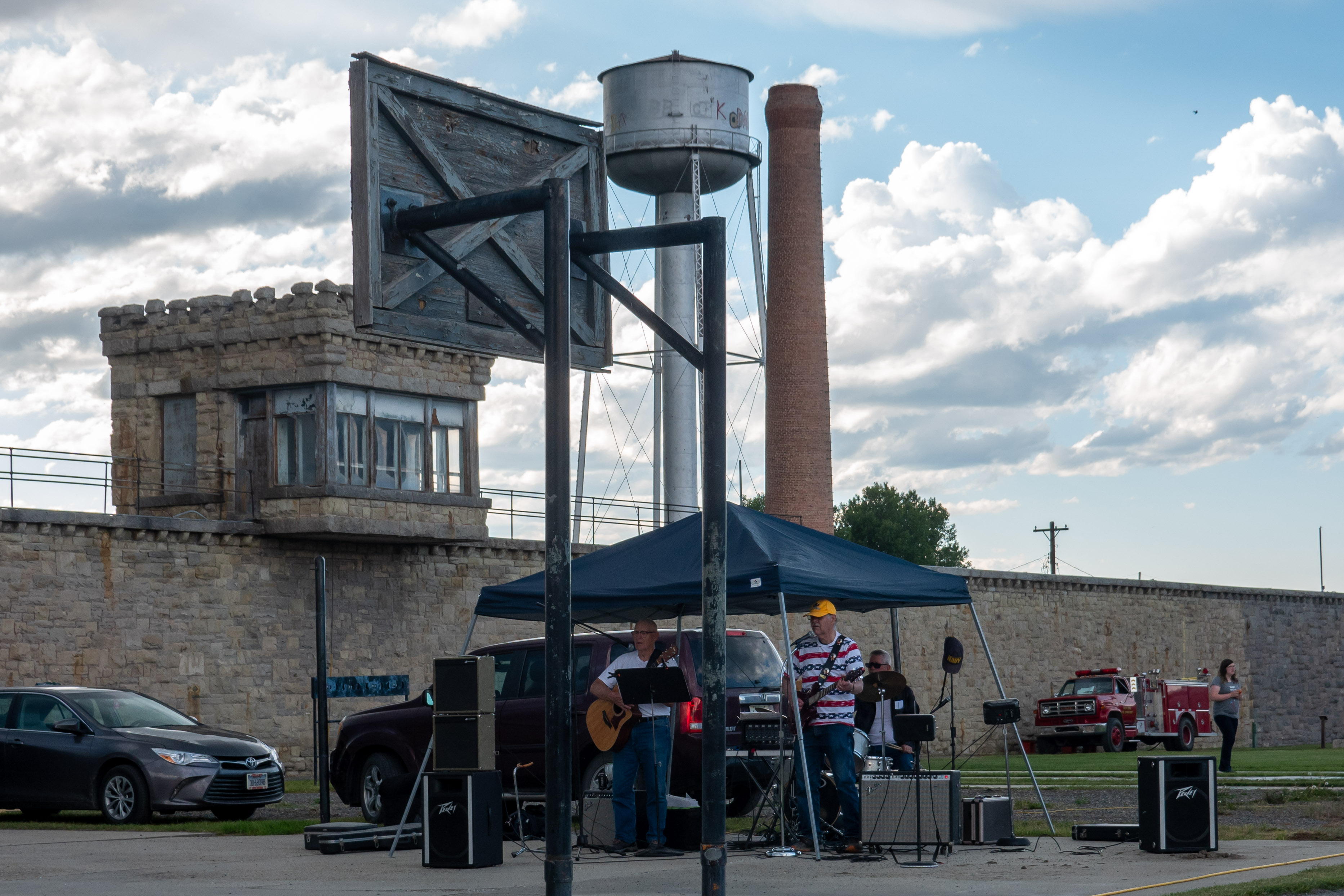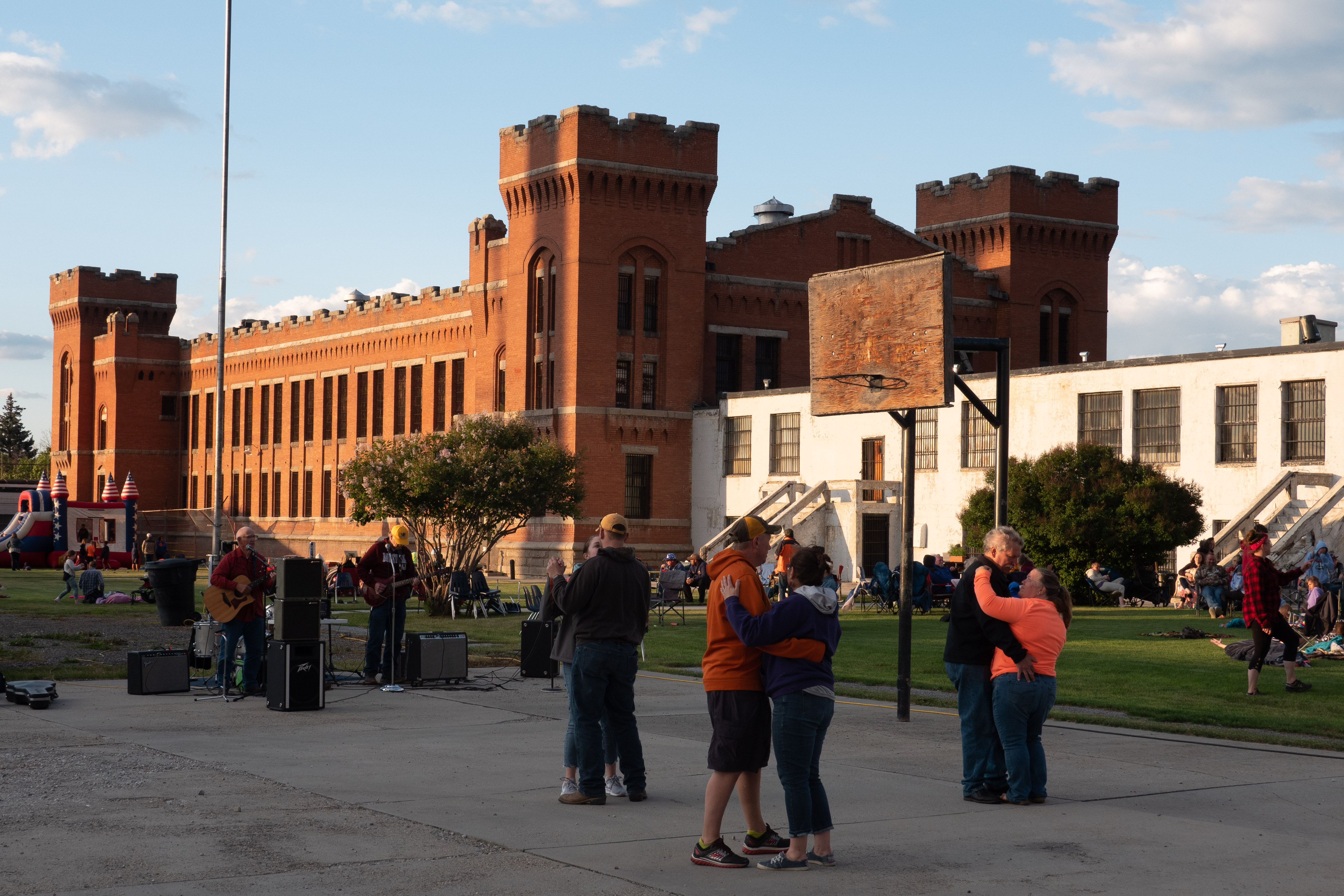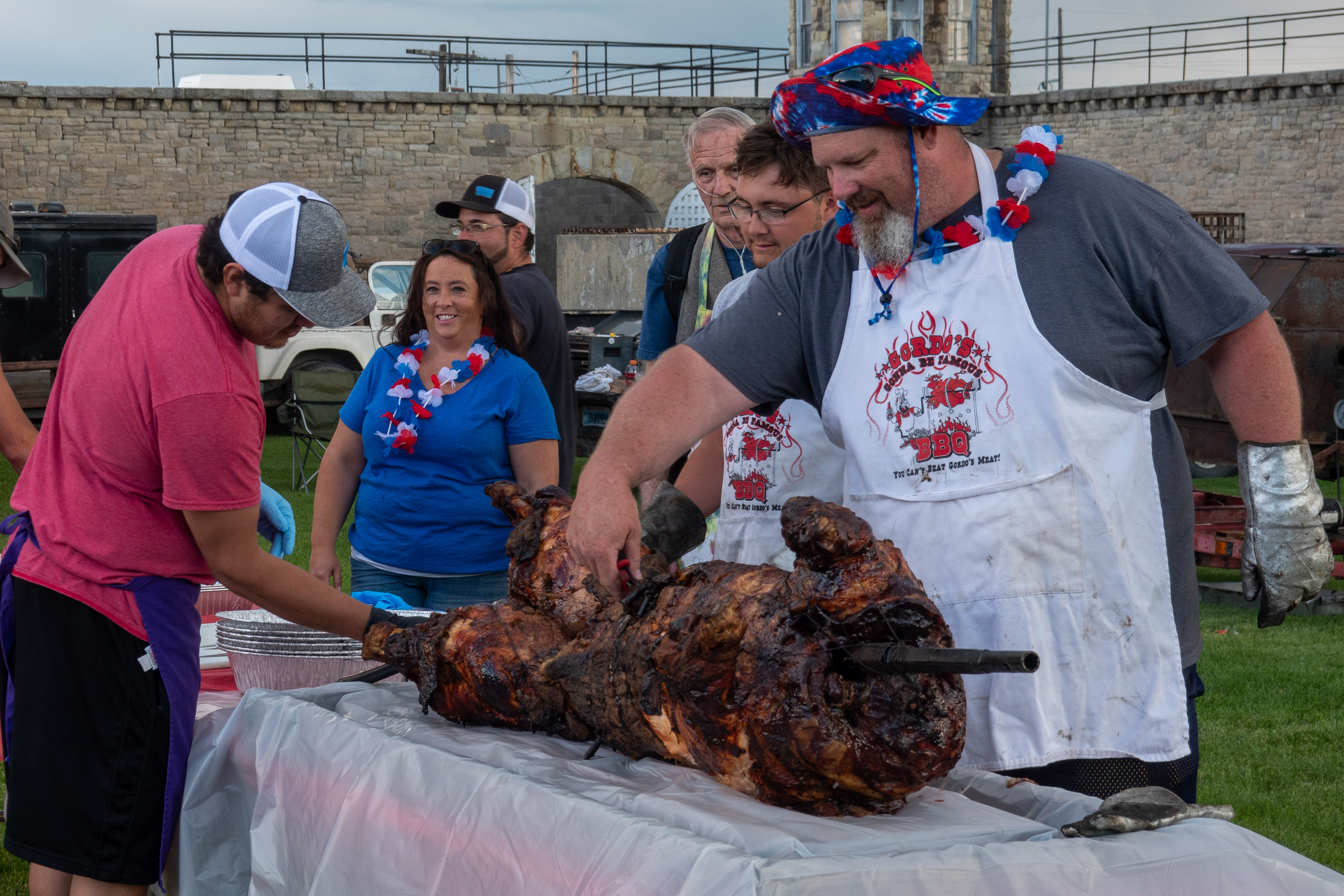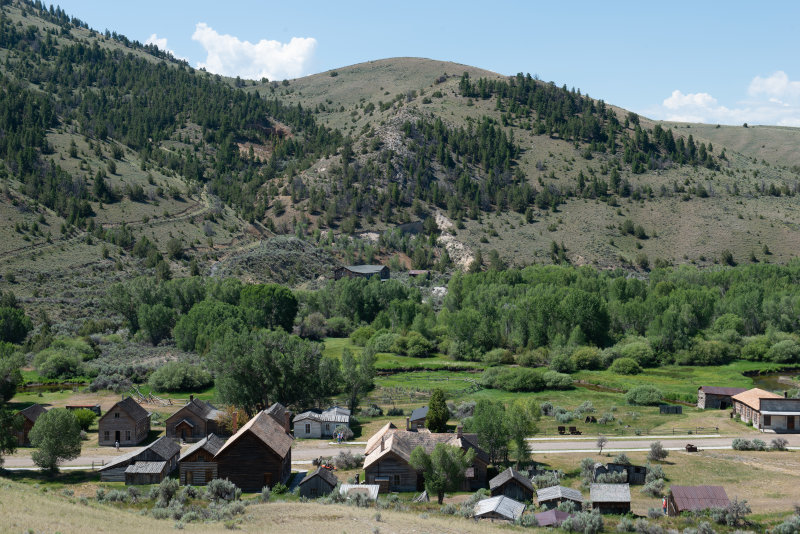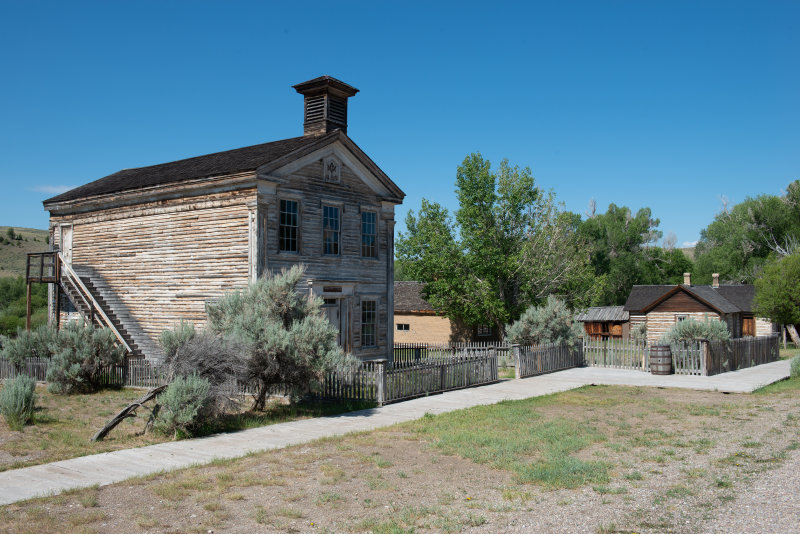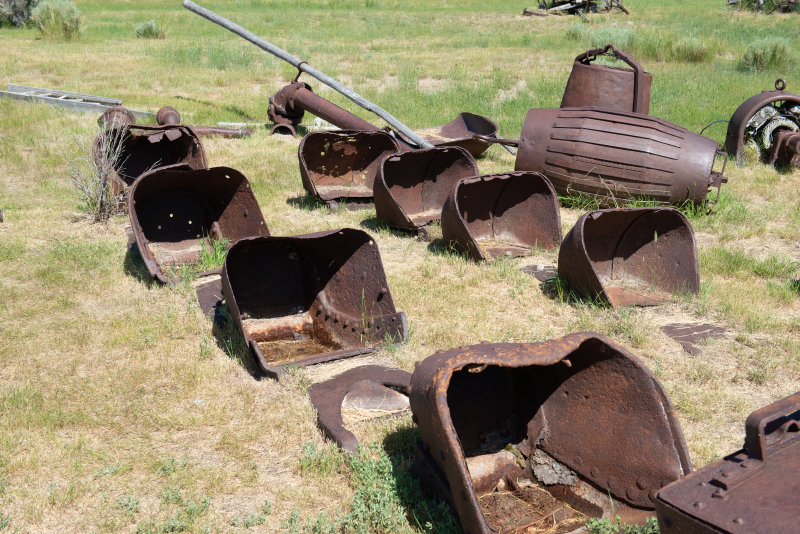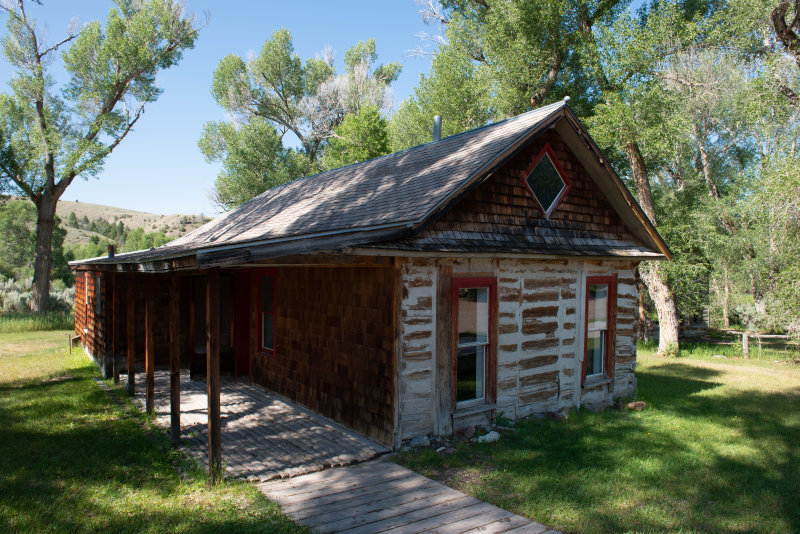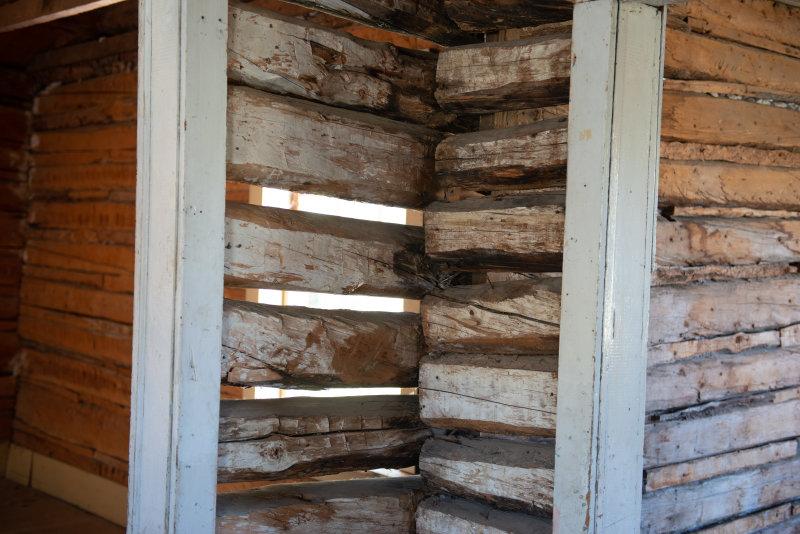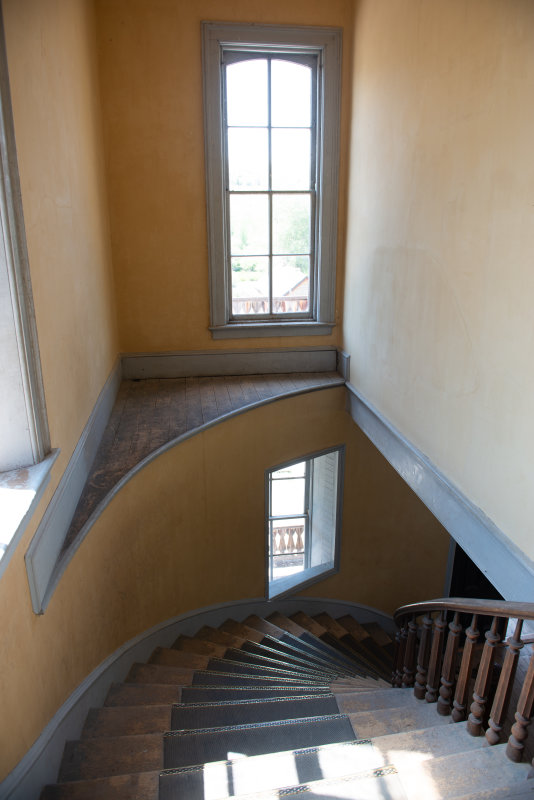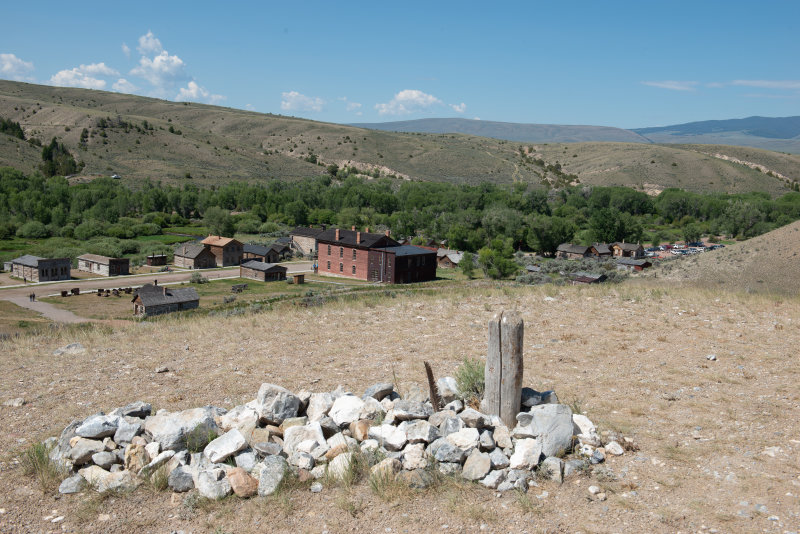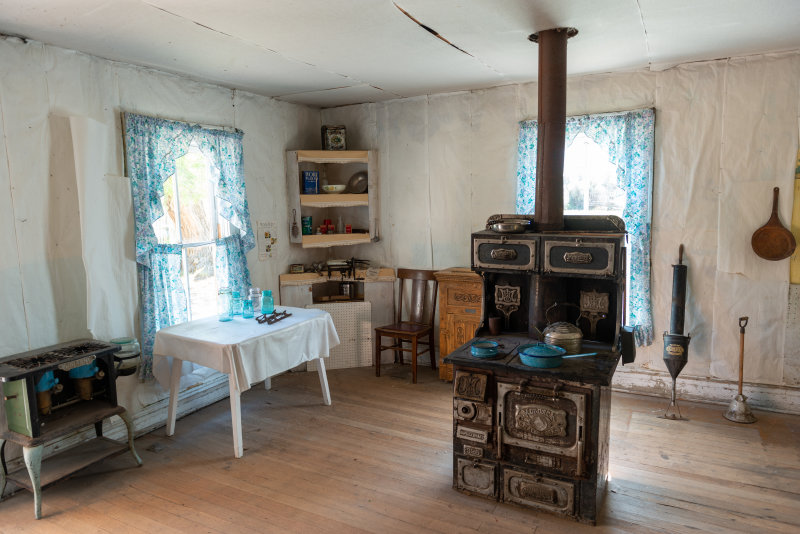Important new photo news. Through the magic of the new editor from WordPress, you can see the full size images simply by clicking on the image in the blog. Cool!
We had been notified that our new refrigerator was en route to the Turners in Nevada so we did rather shorten our planned time in southern Idaho. It was time to get our new refrigerator installed and we had an invitation to attend a steak fry at the local Volunteer Fire Department in Wellington, NV. How could we say “no”?
We had previously visited and admired the north of Idaho and its incredible scenery but as we entered Idaho from southwestern Montana we found the scenery totally different.
Our first stop was the Craters of the Moon National Monument and its totally lunar looking landscape. We had heard that the campground filled up each day despite its bleakness and we made a point of getting there in time to get a space, before we set out on foot for the visitor center to orient ourselves.
It was just as well that we walked from the campground as the parking was impossible for bigger vehicles. Regular cars had taken all the RV spots. (GRRRR!) After the usual movie, which we always enjoy, we set out to drive the loop with its various scenic view points. We climbed the Inferno Cone, a large cinder cone.

When you get to the top you keep expecting to find a crater – but there is none. The cinder cone was built up of cinders blown in from three little vents to the west. One of which now has ice in it. (See image, above.)
We hiked out to view the bigger lava tubes at Indian Tunnel, but did not enter any as we did not have a permit.
We continued south and decided we needed to visit at least one real waterfall before leaving the mountains, so we set off for the Soshone Falls near Twin Falls, Idaho. On line research produced horror stories from drivers of long RV’s about the dangers of the narrow winding road to access the falls. We had no problems, especially after driving in the Andes, and really enjoyed our visit. The falls are controlled as needed for irrigation and other uses and can be quite dry, but they were flowing splendidly during our visit.
We then set off for Nevada as temperatures climbed. We began looking for campgrounds that advertised shade and bringing the Blue Cat up front into the air-conditioned cab during the afternoon as the camper was just too hot for him.
Safely back in Nevada, the fridge installation was an interesting experience, as yet again, the skylight had to be removed for access. We used a neighbor’s hoist to remove the old fridge and install the new one. The Blue Cat was distraught when his camper left to go next door without him! He ended up underneath Robinson Fuso, the Turners old camper, which he obviously felt was familiar territory! He came running when the 917 returned.
After another enjoyable stay, including the aforementioned steak dinner, we headed east on Route 50, again, this time on our way home. We planned a leisurely wander, not a mad dash, and began with a visit to the Berlin-Ichthyosaur State Historic Park. The wonderful book “Traveling America’s Loneliest Road” (https://www.amazon.com/Traveling-Americas-Loneliest-Road-Geologic/dp/1888035056) is full of intriguing side trips from Route 50 and this time we actually had the time to take some.
We turned down a side road until we came to a magnesia mining complex at Gabbs, Nevada. (https://www.premiermagnesia.com/)
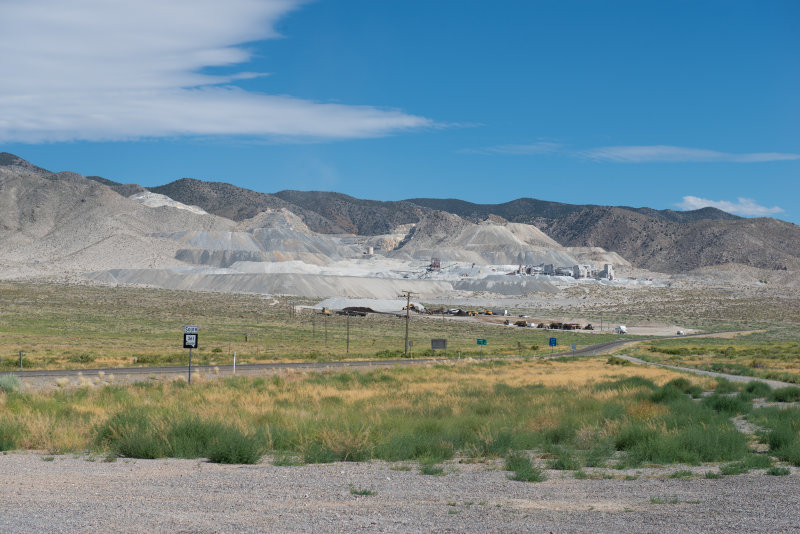
From there we wound our way over the mountains and across the valley to the Berlin-Ichthyosaur park. (http://parks.nv.gov/parks/berlin-ichthyosaur)
Denise really enjoyed seeing the ichthyosaur fossils on display. The shelter had been built over where the bones had been discovered and showed them in the ground, as found, and not rearranged to make a complete skeleton. Over 40 skeletons had been discovered there but many were not in good condition or were incomplete.
The site of the Berlin Mine ghost town is fascinating.

We then headed to Ely for the required Chinese meal. May not meet purist standards, but we enjoyed it, as usual. We took on diesel and were starting to head out of town when we saw a sign for the Success Loop, a 30 mile off road loop which begins after the Cave Lake State Park near Ely and ends five miles north of the town of McGill on Route 93. Hmmmm. Sounds like our kind of road!
The views were spectacular, especially as we approached the Success Summit, with the Schell Creek Range in the background.
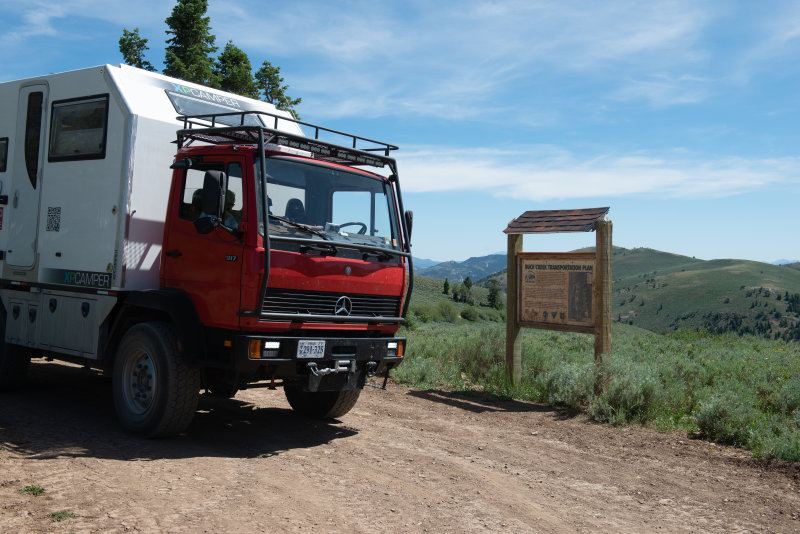
After passing a flock of sheep with their shepherd, we camped in the mountains, off of one of the side trails. The night was delightfully cool as we were at about 8,000 feet.
We had now spent two months at between five and ten thousand feet and really noticed the heat as we dropped below that to return home.
The next morning, we dropped back into Ely for a cappuccino at the combination coffee and flower shop, then got back on Route 50 to take the Osceola trail and enjoy lunch at the top of the pass. A future camping site!

We flew past the Capitol Reef, but this time did not go up to the “Temples.”
Denise wanted to see some ruins so we were planning to go to Cortez to the Hovenweep National Monument but after a night spent in the Natural Bridge National Park campsite, we got sidetracked by some ruins in Mule Canyon. We were looking for a ruin known as the “House on Fire.” In actual fact, despite extensive internet research, we were not able to find them. We finally followed one set of directions and hiked to find a couple of houses on a ledge with spectacular views but gave up on the rest!
With temperatures near 100F, we decided to leave Hovenweep for a future visit and continued east and stayed in Durango, at the campsite astride the Silverton railway line. Always fun to see the trains. (http://www.unitedcampgrounddurango.com/)
Fred was thrilled to drive the Wolf Creek Pass over the Rockies (he likes the song) and as usual the scenery was spectacular, though a lot less snowy than our previous crossing at the Monarch Pass.
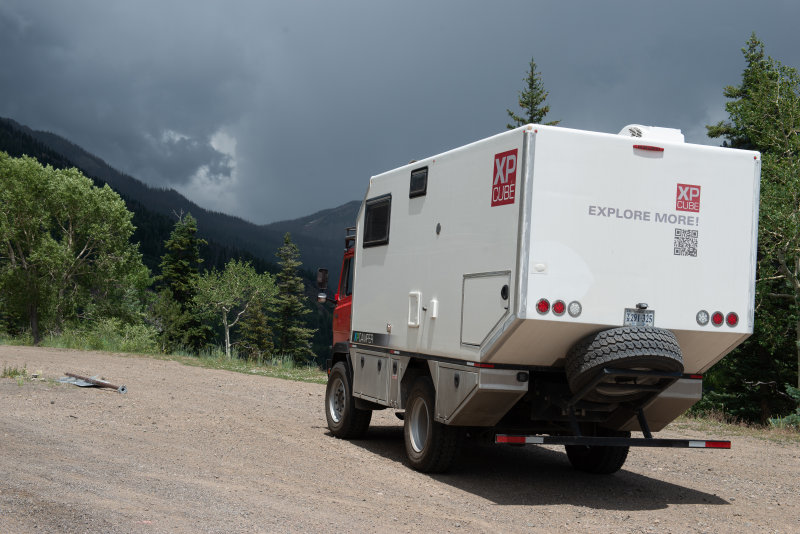
No chickens, just a cat.
We made a quick trip to Taos, New Mexico, hoping for Indian Fry Bread, but in vain. However we did a little shopping and enjoyed some New Mexican food for lunch. (http://taoseno.com/) Who knew that the gentleman running a jewelry store on the corner of the main tourist square would be a Palestinian from Jerusalem? Sadly, or fortunately, perhaps, we were not in the market for jewelry.

We later discovered that friends from our days in Cuba are living in Santa Fe, and had we known, we would have kept going for a visit. Next trip!
We camped at Raton Pass which Fred found interesting, especially as they were having visits from bears and were refusing to accept tent campers. Blue was kept on his leash when outside!
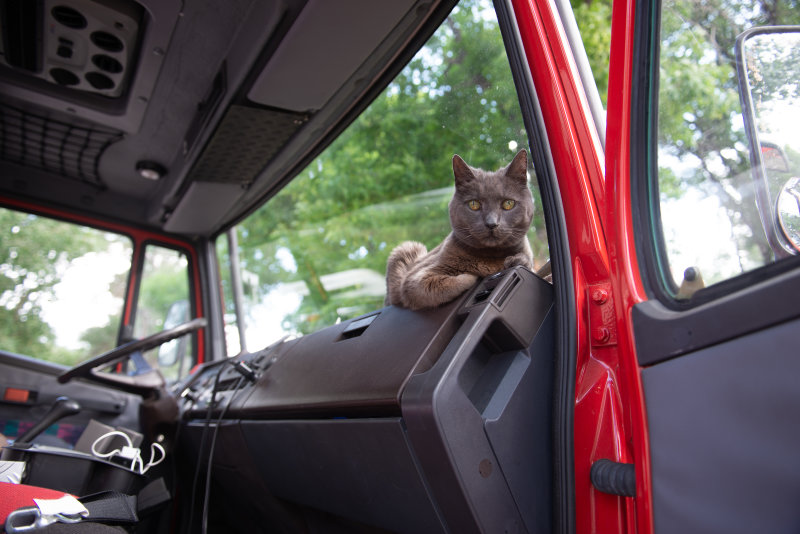
The Appalachians were much less spectacular than the Rockies but we enjoyed our journey home through them. It is good to be home again!
